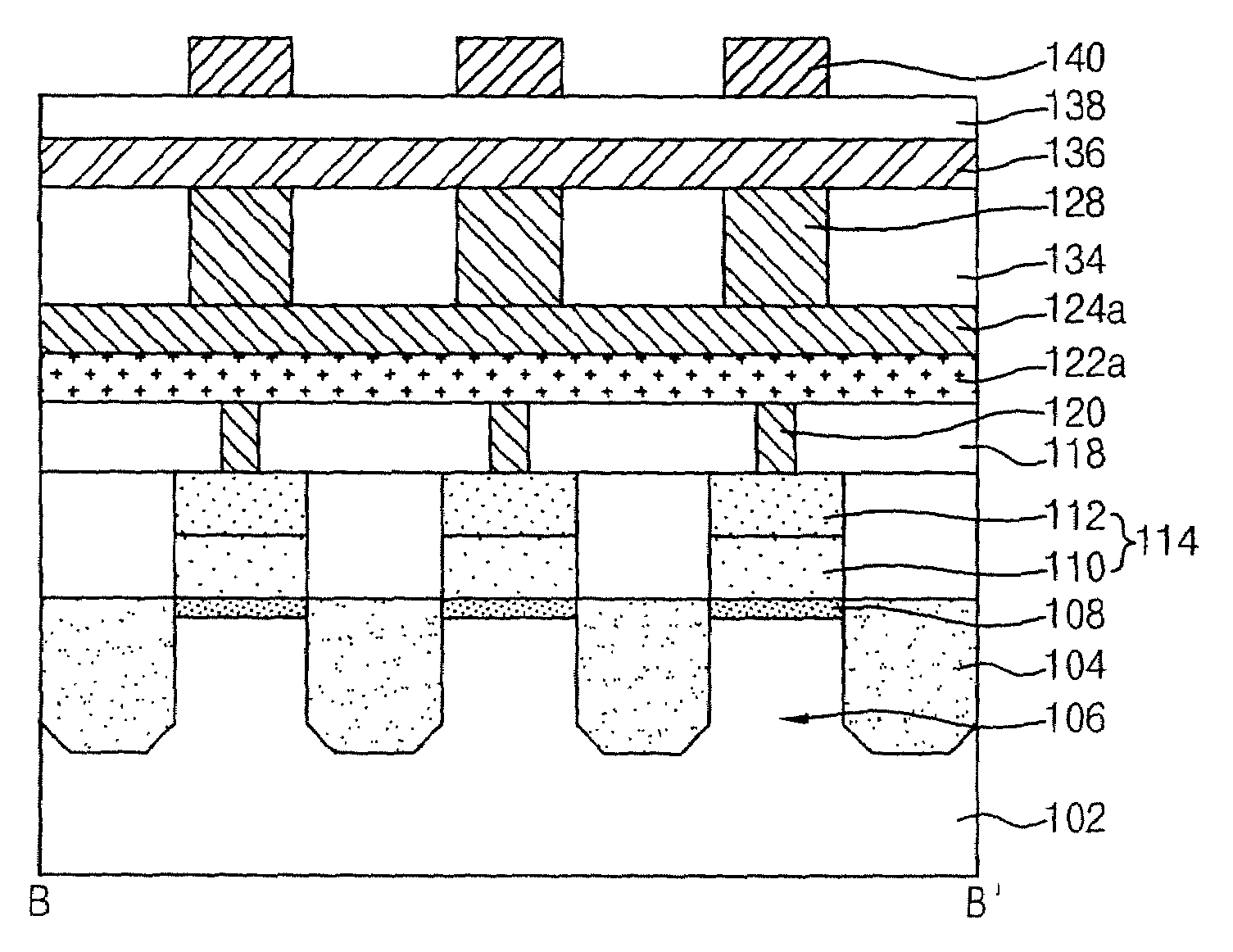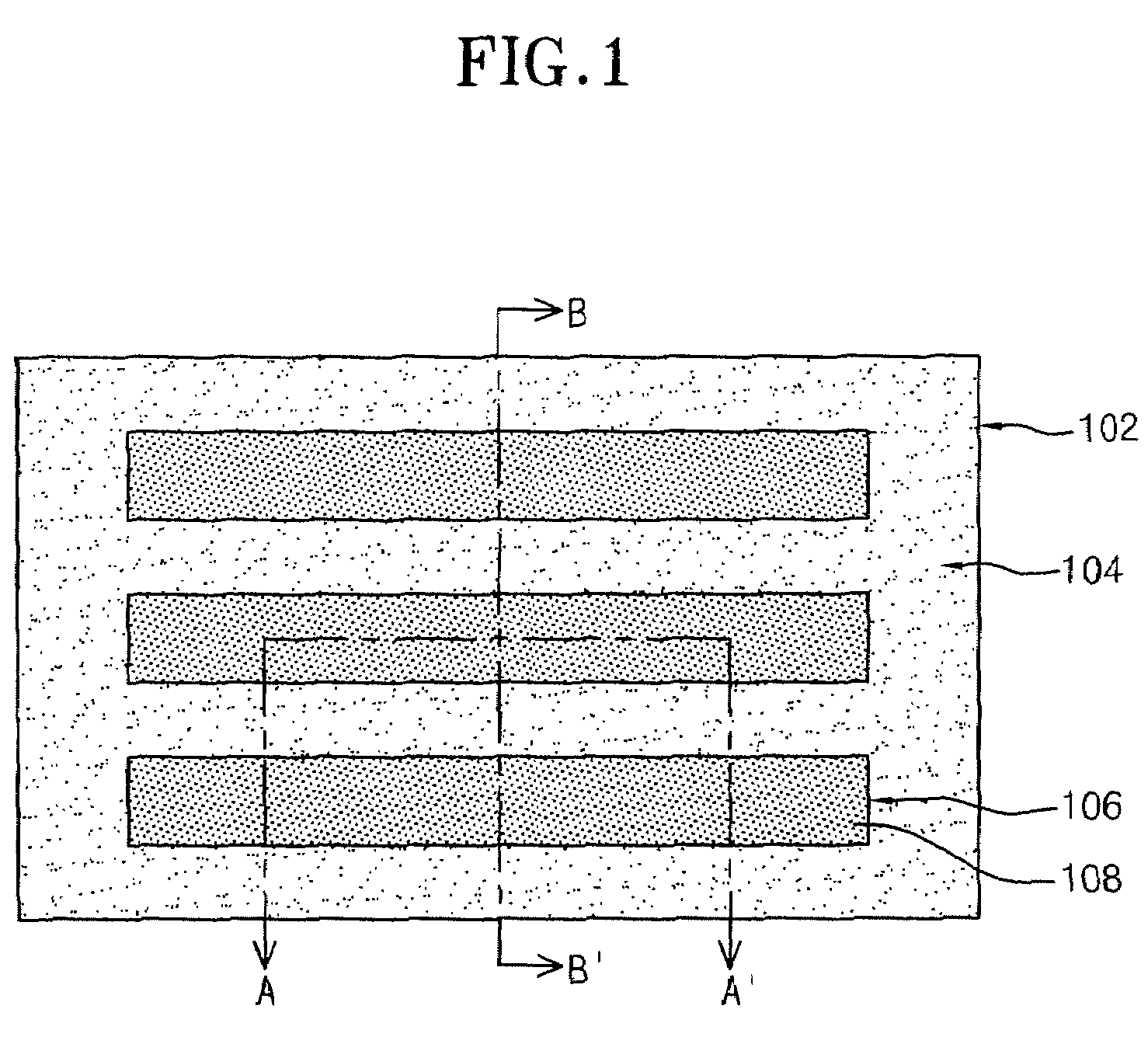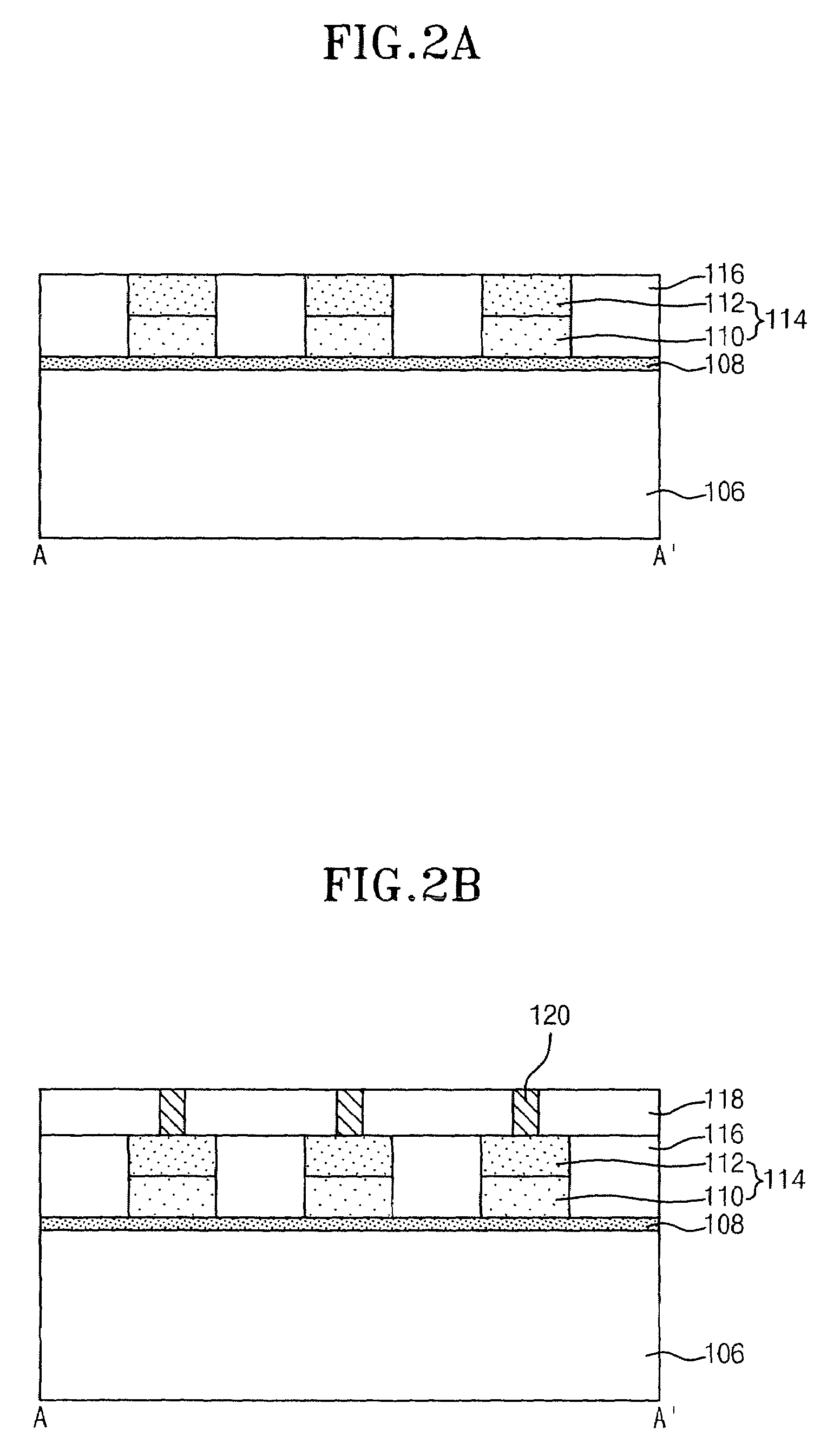Method for manufacturing phase change memory device
a memory device and phase change technology, applied in the direction of instruments, sextants, testing food, etc., can solve the problems of flash memory devices that require high operation voltage, flash memory devices that cannot achieve a high level of integration in a dram, and difficulties experienced in flash memory devices, so as to achieve the effect of preventing or preventing
- Summary
- Abstract
- Description
- Claims
- Application Information
AI Technical Summary
Benefits of technology
Problems solved by technology
Method used
Image
Examples
Embodiment Construction
[0028]Hereafter, the specific embodiment of the present invention will be described in detail with reference to the accompanying drawings.
[0029]FIG. 1 is a top plan view used to explain a method for manufacturing a phase change memory device in accordance with an embodiment of the present invention. FIGS. 2A through 2J are cross sectional side views, taken along the line A-A′ of FIG. 1, illustrating some of the processes of the method for manufacturing a phase change memory device in accordance with the embodiment of the present invention. FIGS. 3A through 3J are cross sectional side views, taken along the line B-B′ of FIG. 1, illustrating some of the processes of the method for manufacturing a phase change memory device in accordance with the embodiment of the present invention.
[0030]Referring to FIGS. 2A and 3A, an isolation structure 104 is formed in a semiconductor substrate 102 to delimit active regions 106. By implanting N+ impurities in the surfaces of the active regions 106 ...
PUM
 Login to View More
Login to View More Abstract
Description
Claims
Application Information
 Login to View More
Login to View More - R&D
- Intellectual Property
- Life Sciences
- Materials
- Tech Scout
- Unparalleled Data Quality
- Higher Quality Content
- 60% Fewer Hallucinations
Browse by: Latest US Patents, China's latest patents, Technical Efficacy Thesaurus, Application Domain, Technology Topic, Popular Technical Reports.
© 2025 PatSnap. All rights reserved.Legal|Privacy policy|Modern Slavery Act Transparency Statement|Sitemap|About US| Contact US: help@patsnap.com



